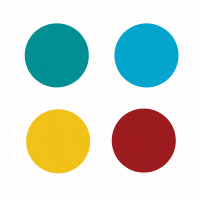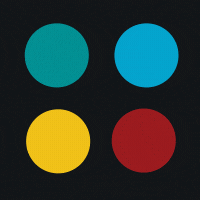




Cloud services are no longer a passing fad, but rather a long-term market worth $677.95 billion. More so than ever, software-as-a-service is a vital component of cloud computing.
Given the abundance of SaaS solutions available, it is not surprising that end-user spending in the sector is expected to increase from $491 billion in 2022 to $597.3 billion in 2023. Additionally, according to Gartner, it will grow by 21.7% soon.
Popular SaaS offerings include email clients like Gmail and Outlook, streaming services for TV shows like Netflix and Amazon Prime, and project management tools like Jira and Trello.
There are dozens of instances of profitable SaaS products that have become indispensable in our everyday lives. In today’s blog, we’ll look at the expenses of SaaS software development and the important elements that influence them.
But first, let’s go over the fundamentals of the SAAS app and how much it will cost to develop one in 2024.
A SaaS (Software as a Service) app is a cloud-based software program that charges a monthly fee and gives users access to various online features and services.
The SaaS app is accessible via a web browser, eliminating the need for users to buy and install software on separate devices or servers. The service provider hosts and manages SaaS apps, removing the need for customers to manage infrastructure, upgrades, and maintenance tasks.
A Saas app provides improved cost-effectiveness, scalability, and flexibility, which makes it a popular option for companies and individuals looking for easily accessible software solutions.
SaaS app development is the process of developing a delivery model in which a solution provider hosts an application and makes it accessible to consumers online.
The process entails designing and developing a safe, dependable, and scalable application, hosting it on a server, and maintaining accessibility through the use of necessary skills and tools.
After getting to know the basics of Saas app development and before finding the factors affecting the cost, it is important to decide the right business model for the Saas product. There are different business models, you can choose one or even multiple.
One of the most widely used SAAS models is the freemium one, which lets businesses provide users with free access to a basic version. It serves as a hook to entice consumers in the hopes that they will eventually recognize the benefits and pay for higher-quality services. Popular examples of platforms that adhere to this concept are Trello and Spotify. It would be beneficial to retain back pricey features that need updates while providing enough value for free to draw users.
This model establishes a direct correlation between pricing and user count in collaborative platforms. The idea behind it is simple: you pay more for higher users. One such example is Canva, which modifies fees as teams grow. Although it sounds reasonable, it requires open discussion about escalating expenses. If the value of your SaaS platform rises as more people sign up, this strategy may work well.
A feature-based pricing model caters to users who need only specific functionality by providing packages based on feature sets. To meet different needs, some platforms divide their offerings into tiers such as Standard or Premium. The versatility of this model can draw in a wide range of customers, but it necessitates careful feature division and value evaluation.
A genuinely flexible, usage-based model only charges people for the products they use. Consider it like a utility bill, where customers pay for the usage. This guarantees that consumers only pay for what they consider important, but it also necessitates a strong monitoring mechanism.
The flat rate model is a simple method that charges users a fixed amount for unlimited access. Users are aware of exactly what they are getting and how much it will cost; there are no tiers or other hassles. However, while it reduces decision-making complexity, it may not always extract the full value of high-usage customers.
Quick-Tip
Overall, the price strategy you select should align with the preferences and usage habits of your target audience and the true value of your SaaS product. Making the proper decision now can provide the groundwork for long-term growth and profitability.
Your SaaS app would require varied functionality depending on the goal of your organization. Starting the project with just the basics will be sufficient if the product is simple, focused on one particular theme, and minimal capabilities will cost less.
More sophisticated platforms with more extensive apps, however, can call for implementing a few extra features, which would increase expenses. When a project starts, you concentrate on key features while developing an MVP. Once you have consumer validation, you can go on to design a complete product.
The type of software is another major factor that determines the cost of developing a SaaS solution. Building some SaaS projects may be very challenging, mostly because of the amount of new features that need to be included and the sensitive nature of the data that needs to be managed.
Take accounting software, for example. To prevent critical financial information from leaking, cutting-edge data protection methods are needed. ERP development for large organizations can also be challenging, resulting in increased costs.
| Type of SaaS | The Average Cost |
| CRM | $60,000 |
| ERP | $120,000 |
| Accounting | $80,000 |
| Project management | $70,000 |
| Email marketing | $70,000 |
| MarTech | $100,000 |
| Visual website builder | $150,000 |
The location and type of development team have a significant impact on the financial aspects of SaaS app development. Various cost structures arise from the intersection of factors such as hourly rates, expertise, and communication dynamics. You have two options: employing a SaaS development company or going with freelancers who can assist you all the way.
If you have a basic requirement for a shorter period, then a freelancer can help you out. However, for your complex Saas project development requirements, which require dedicated support and professionals, hiring a development company is the way to go.
As a development team, you will probably have to choose between using third-party API connectors or creating the entire back end from scratch to allow for a high degree of customization. For common functions like payment, subscription, login, etc., you can select cost-effective APIs.
The developers must, however, adhere to best practices, which include going over documentation, picking dependable APIs, conducting security vulnerability audits, handling scalability concerns, etc. Since each of these procedures is a small project in and of itself, it takes a great deal of skill, knowledge, and time to do correctly, which raises the entire cost.
You can choose a platform for SaaS just like you can for other applications. For instance, a business-to-business company must create a web application because the majority of its clients utilize laptops or desktop computers.
On the other hand, B2C businesses are more likely to choose mobile applications since they anticipate that their clients will use smartphones to access their products or services. While the information remains largely unchanged, the UI/UX evolves, affecting the price of a SaaS product.
Due to the sensitive user data they handle, SaaS apps are great targets for hackers. Risks like malware attacks, data breaches, and leaks can do serious harm to one’s finances and reputation. It might take a lot of resources to continuously resolve safety issues, and your chances of success are hampered by a lack of client trust.
Prioritizing solution security and compliance throughout product development necessitates implementing strong safeguards. The safety of the system will be improved by features including field-level encryption, role-based access restriction, and two-factor authentication.
Furthermore, there are expenses associated with compliance and security procedures, which will impact the total development cost.
Slack is a cloud-based team collaboration application that allows users to interact in real-time with one another. This solution offers an easy-to-use interface for managing messages, which makes teams more productive and well-organized.
The main functionalities incorporated into Slack are:
Enhanced team productivity is Slack’s MVP. By offering a consolidated platform for collaboration and reducing email overload, it improves team productivity. It requires around $1.5 million to develop an app like Slack.
Shopify is a robust e-commerce platform that facilitates the development and management of online stores for companies of all sizes. The organization provides a range of plans, from basic Lite plans to sophisticated Pro plans, so businesses can select the one that best suits their requirements.
Among Shopify’s fundamental features were:
Shopify’s MVP facilitated easy online purchasing and e-commerce growth by assisting small businesses and entrepreneurs in establishing an online presence. Consequently, the approximate cost of establishing an MVP for a SaaS platform for Shopify was $500,000.
Zoom, founded in 2011 by Eric Yuan, is a cloud-based video conferencing application that has grown in popularity for its seamless online communication solutions. It was initially designed for virtual meetings, Zoom has evolved into a versatile platform, accommodating various communication needs.
Standout Features:
Spotify, founded in 2006 has emerged as one of the leading music streaming platforms globally. It began with a revolutionary model that allowed users to stream music for free, supported by ads, making music accessible to a broader audience. Over the years, Spotify has evolved, offering a vast library of songs, podcasts, and personalized playlists.
Standout Features of Spotify are:
Consequently, the approximate cost of establishing an MVP like Spotify is around $70,000.
The planning stage develops a high-level plan and specifies the project’s main goals. It includes defining the issue, figuring out how big the current systems are, figuring out who your target market is, being aware of market changes and conditions, and creating a strong plan for the next development cycle.
Product Discovery Phase services normally take one to two weeks or approximately 40 hours. Multiplying the total number of hours by the specialist’s hourly rate (20–120) will give you an estimate of the cost of this phase. The price range is expected to be $1,600–$4,800+.
After you have a clear understanding of what your Saas product will do, you need to outline your goals, gather feedback from potential customers, and create a solid plan. Creating a budget for SaaS app development is difficult. Making an MVP (Minimum Viable Product) may therefore be the first step you need to take if you’re looking for investment for your firm.
These apps only have the most basic functionalities. At this point, you will know if it has a future. Determining whether you are heading in the right direction is crucial.
A basic MVP of your SaaS software will cost between $25,000 and $50,000 for a non-complex project with conventional functionality.
UI/UX design is an important stage in the creation of your SaaS product since it dictates how the interface will look and what user experience it will provide to clients. One of the most crucial aspects of development is user experience.
Another crucial step is testing, which tells you whether your product’s user experience is appropriate for the target market. At every level of development, test your app and use user feedback to improve the UI/UX.
UX design typically costs between $35 and $60 per hour. A simple SaaS application takes around three weeks to create and costs between $3000 and $5500.
Based on their primary features, SaaS companies must choose their tech stack before beginning front-end development. Users can quickly create an opinion about your application in just 50 milliseconds. It must thus be good.
Creating a beautiful design is just one aspect of front-end development; other key responsibilities include optimizing pictures, minimizing server calls, reducing resources, deleting custom fronts, compressing files, using cache and lazy loading, etc.
They support a positive user experience, which calls for proficiency. A good front-end takes about 10 to 12 weeks to construct, and a developer typically charges $25 to $75 per hour, or $10,000 to $30,000.
The cost of SaaS product development also depends on back-end developers determining the appropriate arrangement for a serving platform and configuring the environment.
Another aspect that could increase your software development costs is whether your back-end programmers need to purchase third-party software tools, development libraries, data sets, or databases. The price of these tools as well as additional components can differ greatly.
The administrative expenses of back-end development, such as setting up and backing up data and maintaining user accounts and permissions, must also be taken into account. These will take approximately 20-25 weeks to complete, and the average developer fee is between $20 and $70, with a cost range of $16,000 to $56,000.
The price per month of upkeep and improvements by a small group of designers, developers, and quality control experts will range from $10,000 to $20,000 or more. SaaS hosting costs can range from $1,000 to more than $10,000.
Service-level agreements, security guidelines, project requirements, and the shared cloud infrastructure must all be followed by operations. When launching your SaaS product, be sure to properly launch marketing and sales initiatives. Refresh, improve, and optimize services regularly. To prevent user base fragmentation and guarantee ongoing availability, developers must deliver updates utilizing no-downtime delivery.
Marketing is an investment since it increases your reach, visibility, revenue, and return on investment. Marketing costs are often two to three times higher than development costs. It encompasses PR, social media marketing, content marketing, product hunting, email marketing, SEO, and more. One characteristic of successful SaaS products is a well-thought-out and focused marketing plan.
There are hundreds of new SaaS apps released every day, therefore you need to differentiate yourself and be noticeable to your target market.
The next stage after releasing a product into the market is to build up a customer support portal. It assists you in answering customer queries that they will face throughout, right from pre-purchase, during the purchase, and even post-sales support.
Customer support is surely important but it’s not free. It comes at a cost and budgeting for the same while planning for your SaaS product is no no-brainer to sustain and ensure profitability in the market.
Ensuring robust data security is another crucial cost consideration while you are developing a SaaS product. While you may be aware of the cost of encryption technologies, secure data storage, and compliance with data protection regulations, the associated costs might be hidden from you.
It includes expenses for conducting security audits, obtaining compliance certifications, and ongoing efforts to update and maintain a secure environment. Factoring in these costs is essential to uphold user trust and comply with regulatory standards.
As your SaaS product gains traction and the user base expands, scaling the infrastructure becomes a necessity. It’s crucial to budget for these scaling costs, which may include expenses related to cloud service providers based on resource usage and other associated infrastructure upgrades.
Scaling infrastructure involves upgrading server capacities, implementing load-balancing solutions for optimal performance, and optimizing databases to handle the influx of increased traffic and larger datasets.
SaaS products are very scalable, adaptable, and universal. But there are a lot of moving parts involved in developing a SaaS project, therefore budgeting is crucial.
But there is still no definitive solution to the question, “How much does it cost to build a SaaS platform?” The capabilities you want to employ, the technology stack and platform you want to use, and many other factors determine the cost of ownership for a SaaS application. All SaaS products are unique, therefore their prices also vary.
Nonetheless, we have addressed the primary SaaS development factors that affect the overall cost of creating a SaaS application in this comprehensive guide. We hope that you also have a general understanding of it.
If you are looking for an accurate cost estimate and partner with the leading SaaS development company, feel free to reach out to KrishaWeb. Our leading team of professionals will understand your requirements and offer an estimate and top-notch solutions to fulfil your desired business needs.
Subscribe to our newsletter and learn about the latest digital trends.